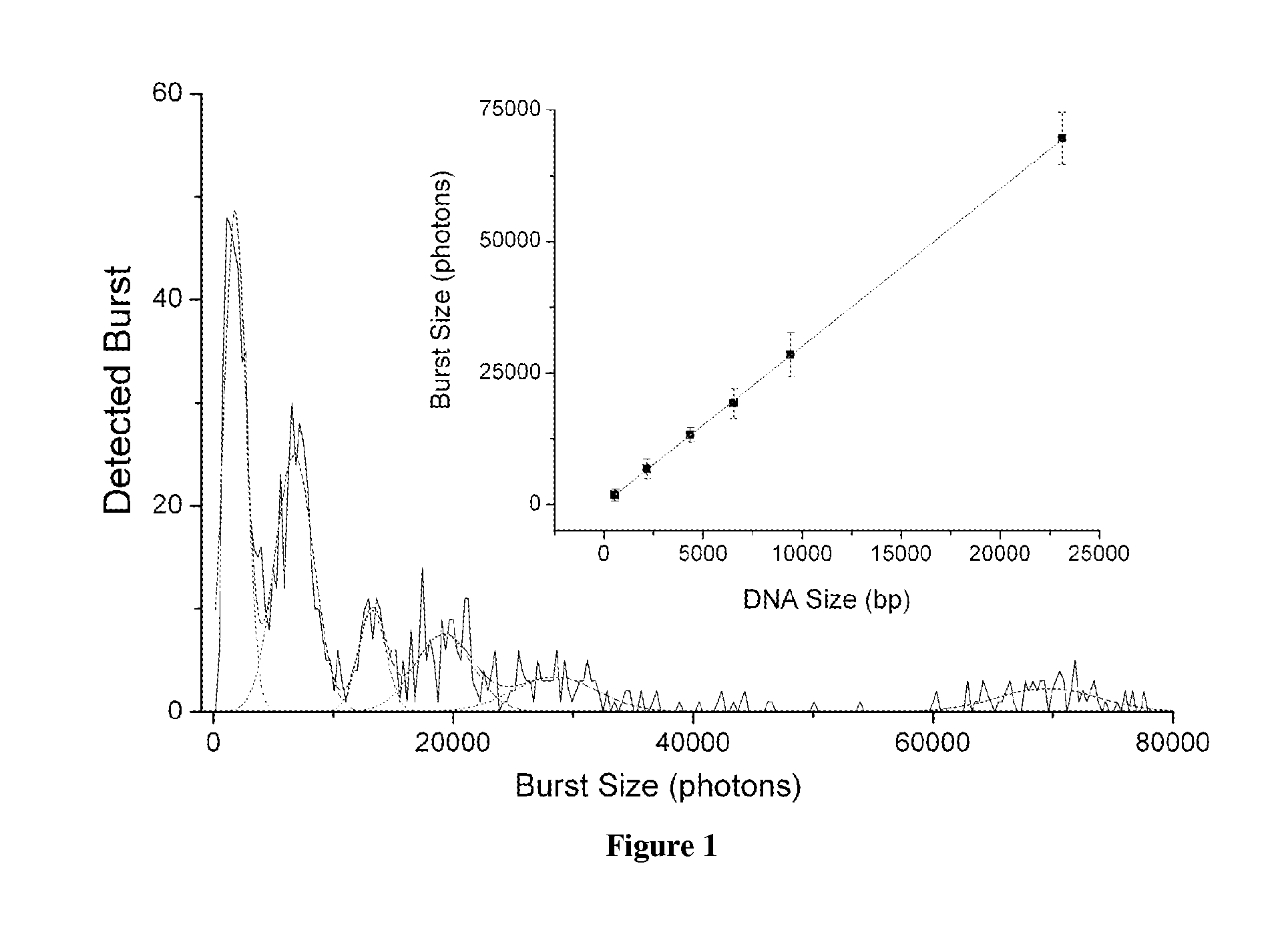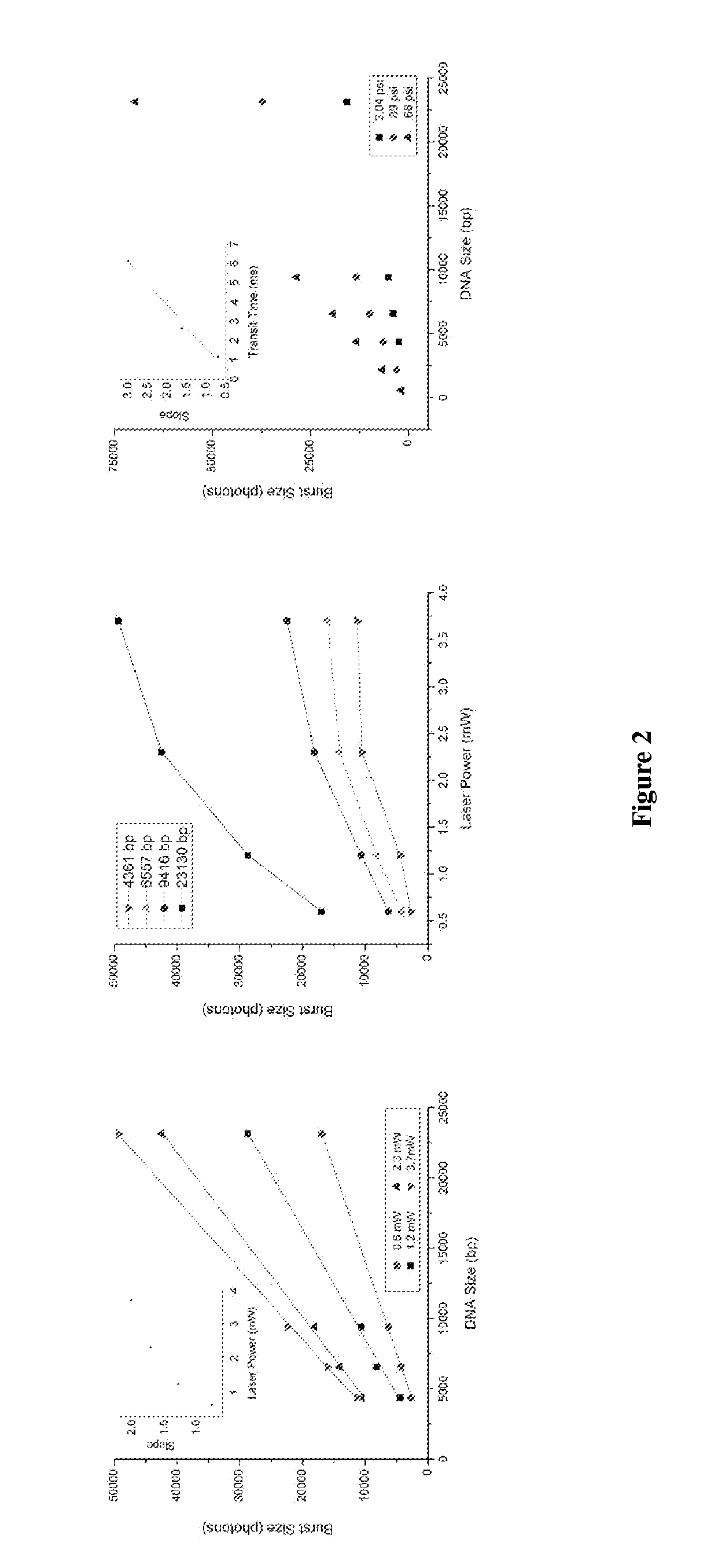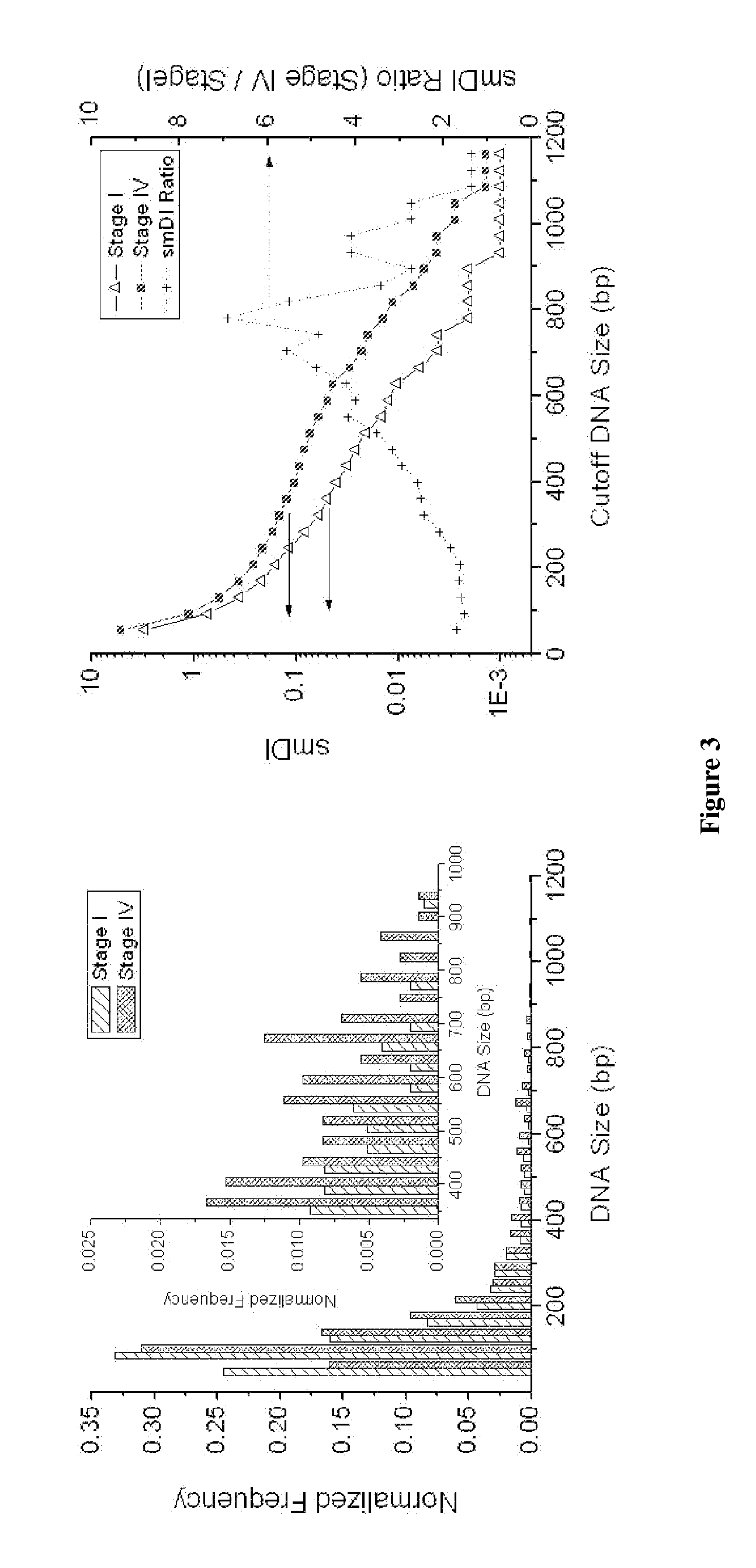DNA integrity assay (DIA) for cancer diagnostics, using confocal fluorescence spectroscopy
a technology of confocal fluorescence and integrity assay, applied in the direction of material analysis, biochemistry apparatus and processes, instruments, etc., can solve the problems of inconvenient quantification and multiplex detection, and inability to reliably reproduce pcr on a daily basis
- Summary
- Abstract
- Description
- Claims
- Application Information
AI Technical Summary
Benefits of technology
Problems solved by technology
Method used
Image
Examples
example i
Materials and Methods
[0104]DNA Sizing Calibration.
[0105]λ Hind III digest DNA (New England Biolabs) was used as a control sample for assay development. To prepare the sample for analysis, the DNA was diluted to 200 ng / mL, mixed with 0.1 μM TOTO-3 dye (Invitrogen), and allowed to incubate at room temperature in the dark for 1 hour. The sample was then further diluted to 1 pM and loaded into the microfluidic device for analysis. All dilutions were performed using TE buffer.
[0106]μCICS Analysis.
[0107]μCICS analysis was performed using the previously described platform (Liu et al. (2008) Biophys J 95, 2964-2975). PDMS microfluidic devices were fabricated with standard soft-lithography techniques. Each microfluidic device contains a large transport channel with a centrally located analysis constriction. The analysis constriction measures 20×5×1.5 μm or 20×5×0.5 μm (l×w×h). The device also contains a filter array at the inlet to remove particles and cells to reduce channel clogging. Sampl...
example ii
Results
[0117]Single molecule DNA sizing of λ Hind III digest DNA was performed via fluorescent burst size analysis. The DNA was stoichiometrically labeled with TOTO-3 intercalating dye such that each DNA molecule incorporated a number of dye molecules that was directly proportionate to its length. The labeled DNA sample was then diluted, fluorescent tracer particles were added, and the sample was loaded into a microfluidic device for μCICS analysis. The μCICS platform has two excitation and detection channels. 488 / 520 nm excitation / detection was used to monitor the tracer particle fluorescence while 633 / 670 nm excitation / detection was used to analyze the DNA fluorescence. The fluidic drive pressure was slowly changed until an average tracer particle transit time of 5 ms was obtained. This corresponds to an average flow velocity of 0.2 mm / s within the microchannel.
[0118]To perform a measurement, the μCICS observation volume is focused into the center of the 5 μm wide analysis constri...
example iii
[0132]The terms light, optical, optics, etc are not intended to be limited to only visible light in the broader concepts. For example, they could include infrared and / or ultraviolet regions of the electromagnetic spectrum according to some embodiments of the current invention.
[0133]An embodiment of the current invention provides a confocal spectroscopy system that can enable highly quantitative, continuous flow, single molecule analysis with high uniformity and high mass detection efficiency. Such a system will be referred to as a Cylindrical Illumination Confocal Spectroscopy (CICS) system. CICS is designed to be a highly sensitive and high throughput detection method that can be generically integrated into microfluidic systems without additional microfluidic components.
[0134]Rather than use a minute, diffraction limited point, CICS uses a sheet-like observation volume that can substantially entirely span the cross-section of a microchannel. It is created through the...
PUM
| Property | Measurement | Unit |
|---|---|---|
| concentrations | aaaaa | aaaaa |
| power | aaaaa | aaaaa |
| bin time | aaaaa | aaaaa |
Abstract
Description
Claims
Application Information
 Login to View More
Login to View More - R&D
- Intellectual Property
- Life Sciences
- Materials
- Tech Scout
- Unparalleled Data Quality
- Higher Quality Content
- 60% Fewer Hallucinations
Browse by: Latest US Patents, China's latest patents, Technical Efficacy Thesaurus, Application Domain, Technology Topic, Popular Technical Reports.
© 2025 PatSnap. All rights reserved.Legal|Privacy policy|Modern Slavery Act Transparency Statement|Sitemap|About US| Contact US: help@patsnap.com



